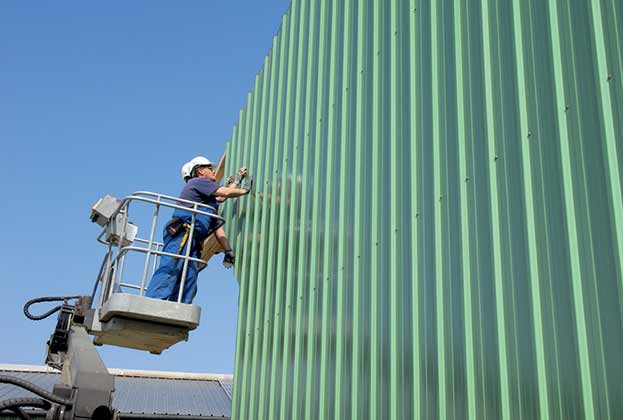Obsolete farm buildings could be the answer to the demand for rural logistics space
.jpg)
With demand for rural logistics space projected to increase, this market could provide an opportunity for farmers to secure commercial tenants for those buildings that are no longer suited to the demands of modern agriculture. This additional capital receipt or income stream would then help farmers to build a business case for investing in new agricultural buildings or alternative storage arrangements for their farms.
Farmers have the right to change the use of up to 5,382 sq ft of agricultural buildings to a flexible commercial use under Class R permitted development rights
Savills Research
Farmers have the right to change the use of up to 5,382 sq ft of agricultural buildings to a flexible commercial use under Class R permitted development rights. This is subject to a number of criteria and exclusions. The commercial uses allowed range from offices to hotels, and include storage and distribution (Class B8). A logistics unit is likely to exceed 1,615 sq ft so an application would need to be made to the local planning authority to see whether prior approval would be required for the following aspects of the development:
- Transport and highways impacts
- Noise impacts
- Contamination risks on the site
- Flooding risks on the site.
Class R permitted development rights allow for the change of use of the building only, any external alterations require a separate planning application. If the building is not suitable for change of use, redevelopment of the site would be necessary and requires a full planning application. Applicants would need to consider the impact of the new use when making their case. For a logistics use, considerations would include extended hours of site operation and higher traffic volumes.
Taking sites forward
Options vary according to appetite for investment
A range of options are available for taking forward a potential site or conversion opportunity. Depending upon the location and the objectives of the farm or estate, sites can be sold or retained as an investment.
Repurposing the existing structure would require the lowest level of investment – it could be leased to provide a base for transferring goods from a larger vehicle to smaller vehicles for final delivery
Savills Research
Repurposing the existing structure would require the lowest level of investment – it could be leased to provide a base for transferring goods from a larger vehicle to smaller vehicles for final delivery. Alternatively, the land could be brought forward for development and either offered for sale or developed through a joint venture to access the expertise and possibly capital from a specialist in the sector.
This could potentially involve working with a developer to construct small units, or directly with an end-user to deliver a building tailored to their specification. As well as higher returns, higher specification units can have stronger tenant retention, because once the tenant has fitted out and built their distribution network around the site changing location becomes risky and costly.
.jpg)
.jpg)
Re-use of dairy buildings
Each week five dairy farmers typically exit the dairy industry in Great Britain. Could converting the cubicle shed into a warehouse unit be a viable option? A 60-cow cubicle shed is around 5,000 sq ft, which is the size in demand from ‘last-mile’ delivery companies, and permitted development rights are available for a conversion. Significant works will be required, particularly to the floor of the unit, but this option could be worth examining when the supply of traditional warehouse space is low, the demand is high and the site is well connected to the wider road network.
.jpg)
Conclusions
The onset of Covid-19 has dramatically altered the geography of the UK online retail supply chain and, while many delivery networks have coped admirably with the increased demand, deeper strategic thinking is required if rural populations start to rise and delivery expectations also change.
While we have yet to see a dramatic change in urban/rural migration patterns, we have assumed there will be a 10% rise in rural house building in the next five years, which will result in an additional 24.6 million sq ft of good quality warehouse space needed in rural locations. Based upon our calculations for the top 20 rural locations for household growth there is a five million sq ft shortfall of warehouse space available. This presents a diversification opportunity for landowners who can deliver new buildings in appropriate locations or indeed re-purpose existing buildings that are no longer required for agricultural purposes.
Read the articles within Spotlight: Rural Logistics below.
.jpg)
.jpg)

